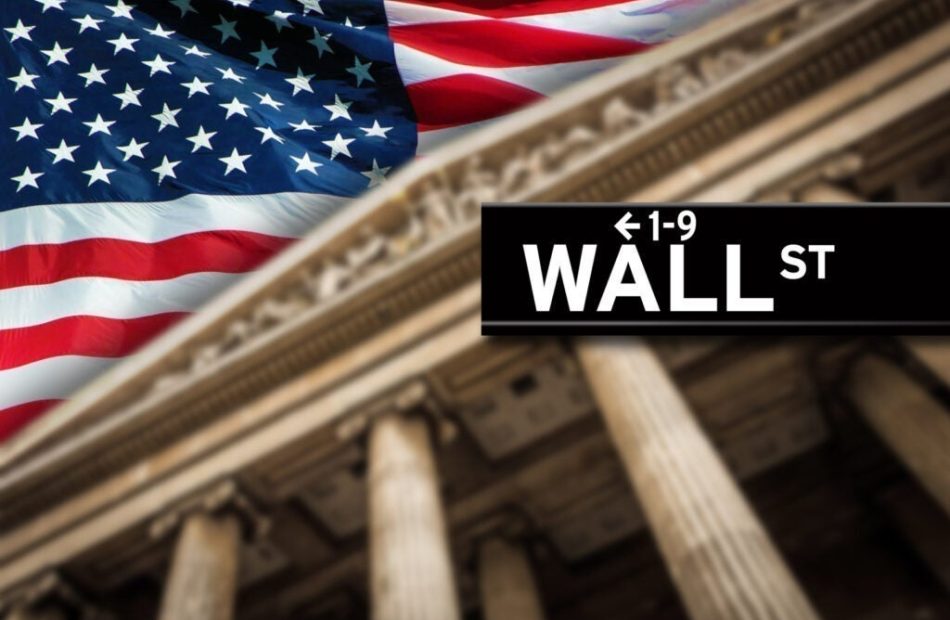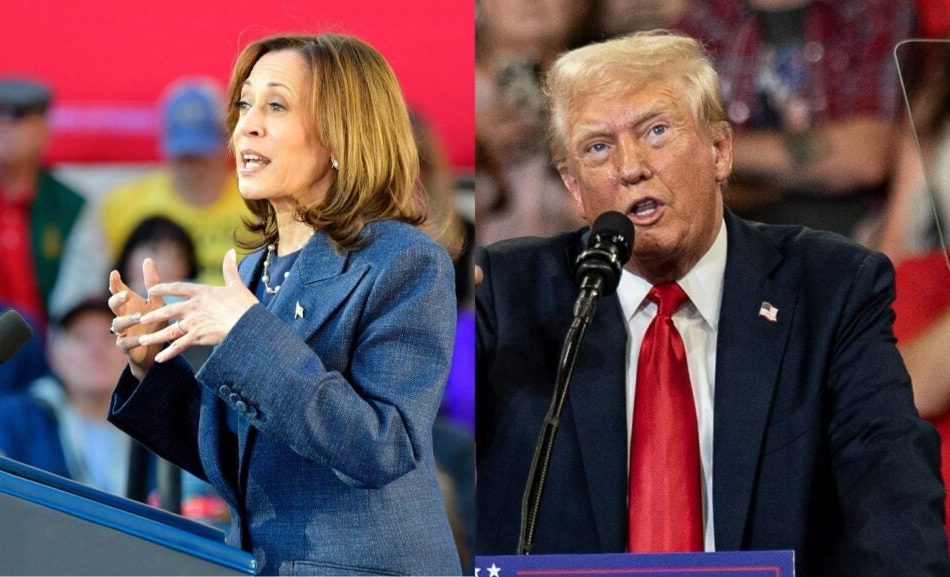Biden Praises Nigeria's Leader For Role In Binance Executive Tigran Gambaryan's Freedom
President Joe Biden praised Nigerian President Bola Tinubu‘s leadership for his instrumental role in ensuring the release of Binance BNB/USD executive Tigran Gambaryan.
What Happened: President Biden had a call with President Tinubu on Tuesday, according to a statement from the White House. Biden appreciated Tinubu’s efforts in securing the release of Gambaryan, a U.S. citizen and former law enforcement official, on humanitarian grounds.
Biden expressed particular gratitude for the cooperation in law enforcement, including the newly established Bilateral Liaison Group on Illicit Finance and Cryptocurrencies.
Why It Matters: Biden’s gesture comes a week after the Nigerian government dropped all money laundering charges against Gambaryan, a Binance executive who had been in detention since February. His bail hearings and other court proceedings were repeatedly postponed due to administrative errors.
Gambaryan was seen pleading for help in the Nigerian courtroom, as videos surfaced revealing a rapid deterioration in his health.
The case drew significant diplomatic attention, with discussions between U.S. and Nigerian officials aimed at securing Gambaryan’s release.
Read Next:
Disclaimer: This content was partially produced with the help of Benzinga Neuro and was reviewed and published by Benzinga editors.
Market News and Data brought to you by Benzinga APIs
© 2024 Benzinga.com. Benzinga does not provide investment advice. All rights reserved.
NexPoint Diversified Real Estate Trust Announces Preferred Share Distribution
DALLAS, Oct. 29, 2024 /PRNewswire/ — NexPoint Diversified Real Estate Trust NXDT (“NXDT” or the “Company”) today announced a dividend for its 5.50% Series A Cumulative Preferred Shares NXDT (“Preferred Shares”) of $0.34375 per share. The dividend will be payable on December 31, 2024, to Preferred Shareholders of record at the close of business December 23, 2024.
About NexPoint Diversified Real Estate Trust
NexPoint Diversified Real Estate Trust is an externally advised, publicly traded, diversified real estate investment trust (REIT) focused on the acquisition, development, and management of opportunistic and value-add investments throughout the United States across multiple sectors where NexPoint and its affiliates have operational expertise. NXDT is externally advised by NexPoint Real Estate Advisors X, L.P. For more information, please visit nxdt.nexpoint.com.
CONTACTS
Investor Relations
Kristen (Thomas) Griffith
IR@nexpoint.com
Media Relations
Prosek Partners for NexPoint
pro-nexpoint@prosek.com
![]() View original content to download multimedia:https://www.prnewswire.com/news-releases/nexpoint-diversified-real-estate-trust-announces-preferred-share-distribution-302290594.html
View original content to download multimedia:https://www.prnewswire.com/news-releases/nexpoint-diversified-real-estate-trust-announces-preferred-share-distribution-302290594.html
SOURCE NexPoint Diversified Real Estate Trust
Market News and Data brought to you by Benzinga APIs
© 2024 Benzinga.com. Benzinga does not provide investment advice. All rights reserved.
Jabil Director Trades $2.49M In Company Stock
STEVEN RAYMUND, Director at Jabil JBL, executed a substantial insider sell on October 28, according to an SEC filing.
What Happened: A Form 4 filing from the U.S. Securities and Exchange Commission on Monday showed that RAYMUND sold 20,000 shares of Jabil. The total transaction amounted to $2,494,096.
Tracking the Tuesday’s morning session, Jabil shares are trading at $125.22, showing a up of 0.34%.
About Jabil
Jabil Inc is a United States-based company engaged in providing manufacturing services and solutions. It provides comprehensive electronics design, production and product management services to companies in various industries and end markets.The Company derives its revenue from providing comprehensive electronics design, production and product management services. It operates in two segments. The Electronics Manufacturing Services (EMS) segment, which is the key revenue driver, is focused on leveraging IT, supply chain design and engineering, technologies largely centered on core electronics. The Diversified Manufacturing Services (DMS) segment is focused on providing engineering solutions, with an emphasis on material sciences, technologies, and healthcare.
Unraveling the Financial Story of Jabil
Revenue Growth: Jabil’s revenue growth over a period of 3 months has been noteworthy. As of 31 August, 2024, the company achieved a revenue growth rate of approximately 2.94%. This indicates a substantial increase in the company’s top-line earnings. As compared to competitors, the company surpassed expectations with a growth rate higher than the average among peers in the Information Technology sector.
Holistic Profitability Examination:
-
Gross Margin: The company issues a cost efficiency warning with a low gross margin of 9.52%, indicating potential difficulties in maintaining profitability compared to its peers.
-
Earnings per Share (EPS): The company excels with an EPS that surpasses the industry average. With a current EPS of 1.2, Jabil showcases strong earnings per share.
Debt Management: The company faces challenges in debt management with a debt-to-equity ratio higher than the industry average. With a ratio of 1.88, caution is advised due to increased financial risk.
Analyzing Market Valuation:
-
Price to Earnings (P/E) Ratio: Jabil’s P/E ratio of 11.17 is below the industry average, suggesting the stock may be undervalued.
-
Price to Sales (P/S) Ratio: With a lower-than-average P/S ratio of 0.54, the stock presents an attractive valuation, potentially signaling a buying opportunity for investors interested in sales performance.
-
EV/EBITDA Analysis (Enterprise Value to its Earnings Before Interest, Taxes, Depreciation & Amortization): With an EV/EBITDA ratio lower than industry benchmarks at 6.87, Jabil presents an attractive value opportunity.
Market Capitalization Analysis: Above industry benchmarks, the company’s market capitalization emphasizes a noteworthy size, indicative of a strong market presence.
Now trade stocks online commission free with Charles Schwab, a trusted and complete investment firm.
Exploring the Significance of Insider Trading
In the complex landscape of investment decisions, investors should approach insider transactions as part of a comprehensive analysis, considering various elements.
In legal terms, an “insider” refers to any officer, director, or beneficial owner of more than ten percent of a company’s equity securities registered under Section 12 of the Securities Exchange Act of 1934. This can include executives in the c-suite and large hedge funds. These insiders are required to let the public know of their transactions via a Form 4 filing, which must be filed within two business days of the transaction.
When a company insider makes a new purchase, that is an indication that they expect the stock to rise.
Insider sells, on the other hand, can be made for a variety of reasons, and may not necessarily mean that the seller thinks the stock will go down.
Essential Transaction Codes Unveiled
When analyzing transactions, investors tend to focus on those in the open market, detailed in Table I of the Form 4 filing. A P in Box 3 denotes a purchase,while S signifies a sale. Transaction code C signals the conversion of an option, and transaction code A denotes a grant, award, or other acquisition of securities from the company.
Check Out The Full List Of Jabil’s Insider Trades.
Insider Buying Alert: Profit from C-Suite Moves
Benzinga Edge reveals every insider trade in real-time. Don’t miss the next big stock move driven by insider confidence. Unlock this ultimate sentiment indicator now. Click here for access.
This article was generated by Benzinga’s automated content engine and reviewed by an editor.
Market News and Data brought to you by Benzinga APIs
© 2024 Benzinga.com. Benzinga does not provide investment advice. All rights reserved.
CPABC: BC Labour market has cooled significantly since April 2024
VANCOUVER, British Columbia, Oct. 29, 2024 (GLOBE NEWSWIRE) — According to the latest BC Check-Up: Work report, an annual release by the Chartered Professional Accountants of British Columbia (CPABC) examining employment trends across the province, B.C.’s unemployment rate jumped to 6.0 per cent in September 2024, up from 5.5 per cent one year earlier.
“The B.C. labour market has continued to soften in 2024, leading to a three-year peak in the unemployment rate,” said Lori Mathison, FCPA, FCGA, LLB, president and CEO of CPABC. “This softening in the job market is occurring at the same time as significant population growth.”
Employment growth in B.C. was effectively flat on a year-over-year basis in September, with a 50,200-worker contraction between April and September 2024. For the full year, the province’s workforce increased by just 9,000 (+0.3 per cent) people compared to an increase in the working-age population of 156,700 people (+3.4 per cent) between September 2023 and September 2024.
As of July 2024, the latest month that data is available, B.C.’s job vacancy rate was 3.6 per cent matching a seven-year low that was first recorded in June. Employers were actively recruiting for just over 90,000 unfilled positions, down 22.0 per cent from the 115,700 vacancies recorded in July 2023.
Falling labour demand has also had an impact on labour compensation, as average wages grew by only 3.3 per cent in September, when compared to September 2023. By comparison, average wages were still growing at a strong 6.5 per cent when employment peaked in April 2024.
“This weakening of the job market is a stark contrast from where we were last year, or even just a few months ago,” noted Mathison. That said, it is important to recognize that the job market varies by region within BC, with some regions seeing much more strength.
The report also noted employment changes by sector over the longer term. As of September 2024, the private sector in B.C. was comprised of just under 1.8 million employees and 443,100 self-employed individuals; that represents growth of 0.9 per cent since before the pandemic in February 2020. In contrast, the public sector grew by 29.2 per cent relative to pre-pandemic levels in February 2020.
“Nearly all employment growth has come from the public sector, as we’ve seen dramatic increases in hiring for health care, education, and public administration over the last five years,” concluded Mathison. “Looking ahead, policymakers should prioritize initiatives that encourage greater private sector investment in the province in order to spur job growth and create more opportunities for British Columbians.”
To learn more, see www.bccheckup.com.
About CPA British Columbia
The Chartered Professional Accountants of British Columbia (CPABC) is the training, governing, and regulatory body for over 40,000 CPA members and 6,000 CPA candidates and students. CPABC carries out its primary mission to protect the public by enforcing the highest professional and ethical standards and contributing to the advancement of public policy.

CPABC Media Contact: Jack Blackwell, Economist 604.259.1143 news@bccpa.ca
Market News and Data brought to you by Benzinga APIs
© 2024 Benzinga.com. Benzinga does not provide investment advice. All rights reserved.
Steel Dynamics Recent Insider Activity
A substantial insider sell was reported on October 28, by Chad Bickford, Vice President at Steel Dynamics STLD, based on the recent SEC filing.
What Happened: Bickford opted to sell 2,000 shares of Steel Dynamics, according to a Form 4 filing with the U.S. Securities and Exchange Commission on Monday. The transaction’s total worth stands at $269,720.
The latest market snapshot at Tuesday morning reveals Steel Dynamics shares up by 0.83%, trading at $136.85.
All You Need to Know About Steel Dynamics
Steel Dynamics Inc operates scrap-based steel minimills with roughly 16 million tons of annual steel production capacity. The company’s segment includes steel operations, metals recycling operations, steel fabrication operations, Aluminum Operations Segment, and others. It generates maximum revenue from the steel operations segment.
Unraveling the Financial Story of Steel Dynamics
Decline in Revenue: Over the 3 months period, Steel Dynamics faced challenges, resulting in a decline of approximately -6.28% in revenue growth as of 30 September, 2024. This signifies a reduction in the company’s top-line earnings. In comparison to its industry peers, the company trails behind with a growth rate lower than the average among peers in the Materials sector.
Holistic Profitability Examination:
-
Gross Margin: The company shows a low gross margin of 13.94%, indicating concerns regarding cost management and overall profitability relative to its industry counterparts.
-
Earnings per Share (EPS): Steel Dynamics’s EPS reflects a decline, falling below the industry average with a current EPS of 2.06.
Debt Management: Steel Dynamics’s debt-to-equity ratio is notably higher than the industry average. With a ratio of 0.41, the company relies more heavily on borrowed funds, indicating a higher level of financial risk.
Navigating Market Valuation:
-
Price to Earnings (P/E) Ratio: The current P/E ratio of 12.21 is below industry norms, indicating potential undervaluation and presenting an investment opportunity.
-
Price to Sales (P/S) Ratio: With a relatively high Price to Sales ratio of 1.2 as compared to the industry average, the stock might be considered overvalued based on sales performance.
-
EV/EBITDA Analysis (Enterprise Value to its Earnings Before Interest, Taxes, Depreciation & Amortization): With an impressive EV/EBITDA ratio of 8.19, Steel Dynamics demonstrates exemplary market valuation, surpassing industry averages.
Market Capitalization: Exceeding industry standards, the company’s market capitalization places it above industry average in size relative to peers. This emphasizes its significant scale and robust market position.
Now trade stocks online commission free with Charles Schwab, a trusted and complete investment firm.
Why Insider Activity Matters in Finance
Insider transactions serve as a piece of the puzzle in investment decisions, rather than the entire picture.
In legal terms, an “insider” refers to any officer, director, or beneficial owner of more than ten percent of a company’s equity securities registered under Section 12 of the Securities Exchange Act of 1934. This can include executives in the c-suite and large hedge funds. These insiders are required to let the public know of their transactions via a Form 4 filing, which must be filed within two business days of the transaction.
When a company insider makes a new purchase, that is an indication that they expect the stock to rise.
Insider sells, on the other hand, can be made for a variety of reasons, and may not necessarily mean that the seller thinks the stock will go down.
A Deep Dive into Insider Transaction Codes
Delving into transactions, investors typically prioritize those unfolding in the open market, as precisely outlined in Table I of the Form 4 filing. A P in Box 3 indicates a purchase, while S signifies a sale. Transaction code C signals the conversion of an option, and transaction code A denotes a grant, award, or other acquisition of securities from the company.
Check Out The Full List Of Steel Dynamics’s Insider Trades.
Insider Buying Alert: Profit from C-Suite Moves
Benzinga Edge reveals every insider trade in real-time. Don’t miss the next big stock move driven by insider confidence. Unlock this ultimate sentiment indicator now. Click here for access.
This article was generated by Benzinga’s automated content engine and reviewed by an editor.
Market News and Data brought to you by Benzinga APIs
© 2024 Benzinga.com. Benzinga does not provide investment advice. All rights reserved.
Tech Stocks Rise Ahead Of Key Earnings, Gold Smashes Records, Bitcoin Nears All-Time Highs: What's Driving Markets Tuesday?
Wall Street took a breather on Tuesday, with most major indices treading water, while tech stocks saw gains as investors braced for earnings reports from mega-cap companies.
The Nasdaq 100 rose 0.7%, buoyed by anticipation around upcoming earnings from Alphabet Inc. GOOGLGOOG and Advanced Micro Devices Inc. AMD, both set to report after market close.
Elsewhere, the S&P 500 was largely unchanged, the Dow Jones dipped slightly, and small-cap stocks underperformed.
In economic news, U.S. job openings dropped by 418,000 to 7.443 million in September 2024 — marking the lowest level since January 2021 and falling short of the market’s expectation of 7.99 million.
The Conference Board’s Consumer Confidence Index surged, posting its largest monthly gain since March 2021. This suggests that while labor demand may be slowing, consumer sentiment remains robust.
Treasury yields continued to climb during concerns over the U.S. budget deficit and political uncertainty ahead of next week’s elections. The yield on the 10-year Treasury note hit 4.33%, the highest level since early July.
Notably, gold prices remained resilient, with the precious metal breaking above the all-time high of $2,770 per ounce as investors sought a hard asset amid fiscal concerns.
The crypto market also saw notable gains. Bitcoin BTC/USD rose nearly 4% to reach $72,700, nearing its record high of $73,697 set in March. Dogecoin (CRYPTO: DOGE) continued its momentum with a 10% rally on Tuesday, following an 11% surge on Monday.
| Major Indices | Price | 1-day % change |
| Nasdaq 100 | 20,500.69 | 0.7% |
| S&P 500 | 5,831.03 | 0.1 % |
| Dow Jones | 42,272.72 | -0.3% |
| Russell 2000 | 2,226.40 | -0.8% |
According to Benzinga Pro data:
- The SPDR S&P 500 ETF Trust SPY inched 0.1% higher to $581.48.
- The SPDR Dow Jones Industrial Average DIA dipped 0.3% to $422.93.
- The tech-heavy Invesco QQQ Trust Series QQQ rose 0.7% to $498.73.
- The iShares Russell 2000 ETF IWM fell 0.7% to $221.01.
- The Technology Select Sector SPDR Fund XLK outperformed, up by 1.1%. The Utilities Select Sector SPDR Fund XLU lagged, down 1.7%.
Stocks reacting to earnings reports included:
- McDonalds Corp. MCD, down 0.4%,
- Pfizer Inc. PFE, down 1.7%,
- PayPal Holdings Inc. PYPL, down over 4%,
- Ecolab Inc. ECL, down 1%,
- Enterprise Product Partner L.P. EPD down 0.3%,
- Royal Caribbean Cruises Ltd. RCL up 3.5%,
- D.R. Horton DHI, down 8.6%,
- Phillips 66 PSX, down 3.9%,
- MSCI Inc. MSCI, down 1.5%,
- Corning Inc. GLW, up 7.8%,
- Ford Motor Co. F, down 8%,
- SoFi Technologies Inc. SOFI, down 6.3%,
- Incyte Corp. SWK, up 9.4%
Among large-cap companies slated to report earnings after the close are Alphabet, Advanced Micro Devices, Visa Inc. V, Stryker Corp. SYK, Chubb Ltd. CB, Mondelez International Inc. MDLZ, Chipotle Mexican Grill CMG and Electronic Arts Inc. EA.
Read Now:
Photo: Shutterstock
Market News and Data brought to you by Benzinga APIs
© 2024 Benzinga.com. Benzinga does not provide investment advice. All rights reserved.
Trump Vs. Harris: How Their Fiscal Plans Could Add Trillions To The US National Debt
As the 2024 U.S. presidential election approaches, the impact of each candidate’s fiscal policies on the national debt is drawing attention.
Both former President Donald Trump and Vice President Kamala Harris have proposed expansive tax and spending measures that would deepen the debt — already projected to reach a historic high in the coming years.
According to a recent analysis from the Committee for a Responsible Federal Budget (CRFB), neither candidate’s plan would place the debt on a sustainable trajectory, with estimates indicating that both would increase the debt by trillions through 2035.
See Also: Better Off With Harris? 42% Of Americans Say Yes, Outpacing Trump In Economic Trust
Trump’s Plan Adds An Estimated $7.75 Trillion In Debt
According to the CRFB’s central estimate, the twice-impeached ex-president would increase the national debt by $7.75 trillion between 2026 and 2035.
This increase would stem primarily from a combination of tax cuts for the wealthy and increased spending, offset partially by new tariffs and other spending reductions. Here’s a breakdown of his proposed measures:
- Deficit-Increasing Policies: Trump has proposed to extend parts of the 2017 Tax Cuts and Jobs Act (TCJA), which would cost $5.35 trillion. He also plans to cut individual and business taxes further, adding an estimated $3.75 trillion and $250 billion to the debt, respectively. Trump also calls for increased defense spending, about $400 billion, and heightened immigration enforcement, about $350 billion.
- Deficit-Reducing Policies: To offset some of these costs, Trump proposes to impose new tariffs on imports, projected to raise $2.7 trillion. However, experts say these tariffs will likely raise living costs by about 3 to 4 percent, disproportionately affecting middle- and lower-income families. Trump would also eliminate environmental and education-related expenditures (i.e., EV tax credits and the Department of Education).
- Interest Costs: These policy changes would lead to an estimated $1.05 trillion in additional interest costs over the period.
If Trump’s plan were implemented, the debt would reach 143% of GDP by 2035, an 18-point increase over the current law baseline.
Economists were already issuing warnings about Trump’s economic policies. Nobel winner Paul Krugman, for example, said Trump’s plans could rewind economic progress 90 years and ignite global conflict.
See Also: Renters Say Kamala Harris Beats Trump On Housing Affordability: 48% Choose The Vice President
Harris’s Plan Adds An Estimated $3.95 Trillion In Debt
Harris’s fiscal approach would increase the debt by $3.95 trillion between 2026 and 2035, according to the CRFB.
The Democratic nominee is focusing on expanding social safety nets and tax credits while imposing new taxes on corporations and high-income households to offset some of the additional spending.
- Deficit-Increasing Policies: Harris proposes a range of social and tax benefits, including expanded child tax credits, support for health care, Medicare, and housing, along with increased resources for education, child care, and paid leave. These measures would collectively add $7.65 trillion to the deficit over the period.
- Deficit-Reducing Policies: To mitigate the fiscal impact, Harris’s plan includes tax hikes on corporations and high-income earners, projected to raise $4 trillion. She also supports reducing prescription drug prices, estimated to save an additional $250 billion.
- Interest Costs: The additional interest costs under Harris’s plan are projected at $550 billion.
Under Harris’s fiscal framework, the debt-to-GDP ratio would rise to 134% by 2035, a 9-point increase from the current projection under existing laws.
Trump vs. Harris: Policy Proposals And Potential Impact On US Budget Deficits
| Policy Category | Harris Plan (2026-2035) | Trump Plan (2026-2035) |
|---|---|---|
| Extend/Modify TCJA | -$3,000 billion | -$5,350 billion |
| Individual Tax Cuts | -$1,600 billion | -$3,750 billion |
| Business Tax Cuts | -$250 billion | -$250 billion |
| Health Care & Long-Term Care | -$1,050 billion | -$150 billion |
| Defense Spending | N/A | -$400 billion |
| Paid Leave & Education | -$1,400 billion | N/A |
| Immigration & Border Security | -$100 billion | -$350 billion |
| Housing-Related Spending | -$250 billion | -$150 billion |
| Total Deficit-Increasing | -$7,650 billion | -$10,400 billion |
| Corporate/High-Income Taxes | +$4,000 billion | N/A |
| Tariffs | N/A | +$2,700 billion |
| Reduce Other Spending | +$250 billion | +$1,000 billion |
| Total Deficit-Reducing | +$4,250 billion | +$3,700 billion |
| Net Interest | -$550 billion | -$1,050 billion |
| Total Net Deficit Impact | -$3,950 billion | -$7,750 billion |
See Also: ‘Tariffs Are Inflationary’: IMF Deputy Chief Rejects Trump’s Trade Policies As Elections Loom
Wide Range Of Potential Outcomes
The CRFB analysis provides both low- and high-cost scenarios for each candidate’s plan, reflecting the uncertainty inherent in long-term fiscal projections.
- Harris Plan: In the low-cost scenario, her policies would add $300 billion to the debt by 2035, while the high-cost estimate reaches $8.3 trillion.
- Trump Plan: The range for Trump is even wider, with a low-cost estimate adding $1.65 trillion and a high-cost estimate pushing the debt up by $15.55 trillion.
Market And Economic Implications
The rising expectations for a larger budget deficit and ballooning national debt are already having a direct impact on financial markets, with Treasury yields surging significantly in recent weeks.
As the U.S. government gears up to fund the electoral promises of either candidate, it will likely need to increase Treasury issuance in the future. This worsening fiscal outlook is leading investors to demand a higher risk premium, which, in turn, pushes up Treasury yields.
Higher yields on government bonds drive up a range of interest rates across the broader economy and financial markets. For example, mortgage rates tend to track long-term Treasury yields closely, meaning homebuyers are likely to face more expensive borrowing costs.
Similarly, interest rates on loans for businesses and consumers will also rise, affecting investments and spending.
The deteriorating fiscal fundamentals and the staggering interest costs on U.S. debt—already exceeding $1 trillion annually—risk putting the Federal Reserve in a challenging position.
Rising fiscal deficits can contribute to inflationary pressures, especially if the economy continues to grow and the labor market remains strong.
In response, the Fed may feel compelled to raise interest rates to control inflation, but doing so in the context of high national debt could further escalate the government’s interest expenses, adding strain to the federal budget.
Every rate hike risks exacerbating the debt burden by inflating interest payments on government debt, which already consume a substantial portion of federal revenue.
If investors start to perceive a more accommodative stance from the Federal Reserve regarding the government’s fiscal needs, there could be a rush toward “hard assets” like gold. Gold is often seen as a safe haven in scenarios where policymakers tolerate higher inflation.
Though this scenario may still seem distant, there are signs that investors are beginning to price it in.
Gold prices, as tracked by the SPDR Gold Trust SPY, have rallied to record highs in October, despite the sharp rise in Treasury yields, breaking a typical inverse relationship. This could signal growing market anticipation of a shift in policy priorities if fiscal pressures continue to mount.
Now Read:
Image: Shutterstock
© 2024 Benzinga.com. Benzinga does not provide investment advice. All rights reserved.
US Consumer Confidence Rises Strongly In October: Stock Market Sentiment Hits New Highs
Consumer confidence in the U.S. economy soared in October, marking the strongest month-over-month increase since March 2021, according to the Conference Board’s latest report.
The Consumer Confidence Index jumped to 108.7, up significantly from 99.2 in September and well above economist expectations of 99.5, as tracked by TradingEconomics.
Confidence Index Rises, Driven By Broader Optimism
The Conference Board’s Consumer Confidence Index, a key gauge of economic sentiment, rose by nearly 10 points in October to reach 108.7. This increase was fueled by improvements across both major components of the index.
The Present Situation Index rose from 123.8 in September to 138.0 in October, as consumers viewed current business and labor market conditions more favorably.
The Expectations Index increased from 82.8 to 89.1, moving further away from the recession-warning threshold of 80.
Dana M. Peterson, chief economist at The Conference Board, highlighted the significance of October’s gains, stating, “Consumer confidence recorded the strongest monthly gain since March 2021, but still did not break free of the narrow range that has prevailed over the past two years.”
See Also: Better Off With Harris? 42% Of Americans Say Yes, Outpacing Trump In Economic Trust
Labor Market Sentiment And Business Conditions Improve
In October, more consumers reported positive views on both business conditions and job availability. The survey found:
- 21.4% of respondents described business conditions as “good,” up from 18.6% in September.
- Those viewing conditions as “bad” decreased to 16.4% from 20.5% the previous month.
Labor market sentiment also showed noticeable improvement:
- 35.1% of consumers reported that jobs were “plentiful,” up from 31.3% in September.
- The share describing jobs as “hard to get” dropped to 16.8% from 18.6%.
According to Peterson, “Consumers’ assessments of current business conditions turned positive. Views on the current availability of jobs rebounded after several months of weakness, potentially reflecting better labor market data.”
Optimism About Future Economic Prospects Gains Traction
October’s confidence gains were broad-based, with optimism evident across all age groups and most income levels.
Consumers aged 35-54 saw the sharpest rise in confidence, while households earning over $100,000 remained the most optimistic on a six-month moving average basis.
Peterson highlighted a notable shift in consumer sentiment around recession risks, stating, “The proportion of consumers anticipating a recession over the next 12 months dropped to its lowest level since the question was first asked in July 2022.”
Mixed Signals On Inflation, Interest Rates, Strong Sentiment On Stocks
Despite signs of easing inflation, consumer expectations for price increases in the year ahead nudged slightly higher.
Average 12-month inflation expectations rose to 5.3% in October from 5.2% in September. This increase could reflect persistent pressures on food and services prices, even as gas prices and overall inflation have slowed.
Consumers were also cautious about interest rates:
- 47.5% of respondents expect interest rates to rise in the next 12 months, reversing a four-month decline in rate hike expectations.
- The share anticipating lower rates dropped to 30.3%.
Meanwhile, “consumers became more upbeat about the stock market: 51.4% of consumers expected stock prices “to increase over the year ahead, the highest reading since the question was first asked in 1987,” the Conference Board wrote.
On Tuesday, the S&P 500 Index — as tracked by the SPDR S&P 500 ETF Trust SPY — closed 0.2% higher, hovering at a less than one percentage point distance from its record highs set earlier this month.
Political Concerns Fade as Economic Issues Dominate
Interestingly, October’s survey showed a decline in consumer concerns around politics, even as the November elections approach.
“Election” ranked fifth among top concerns, trailing behind issues like prices, inflation, food, and groceries. This marks a stark contrast to previous election years; in October 2016, “election” was the most mentioned topic, and in October 2020, it was second only to COVID.
Now Read:
Market News and Data brought to you by Benzinga APIs
© 2024 Benzinga.com. Benzinga does not provide investment advice. All rights reserved.









